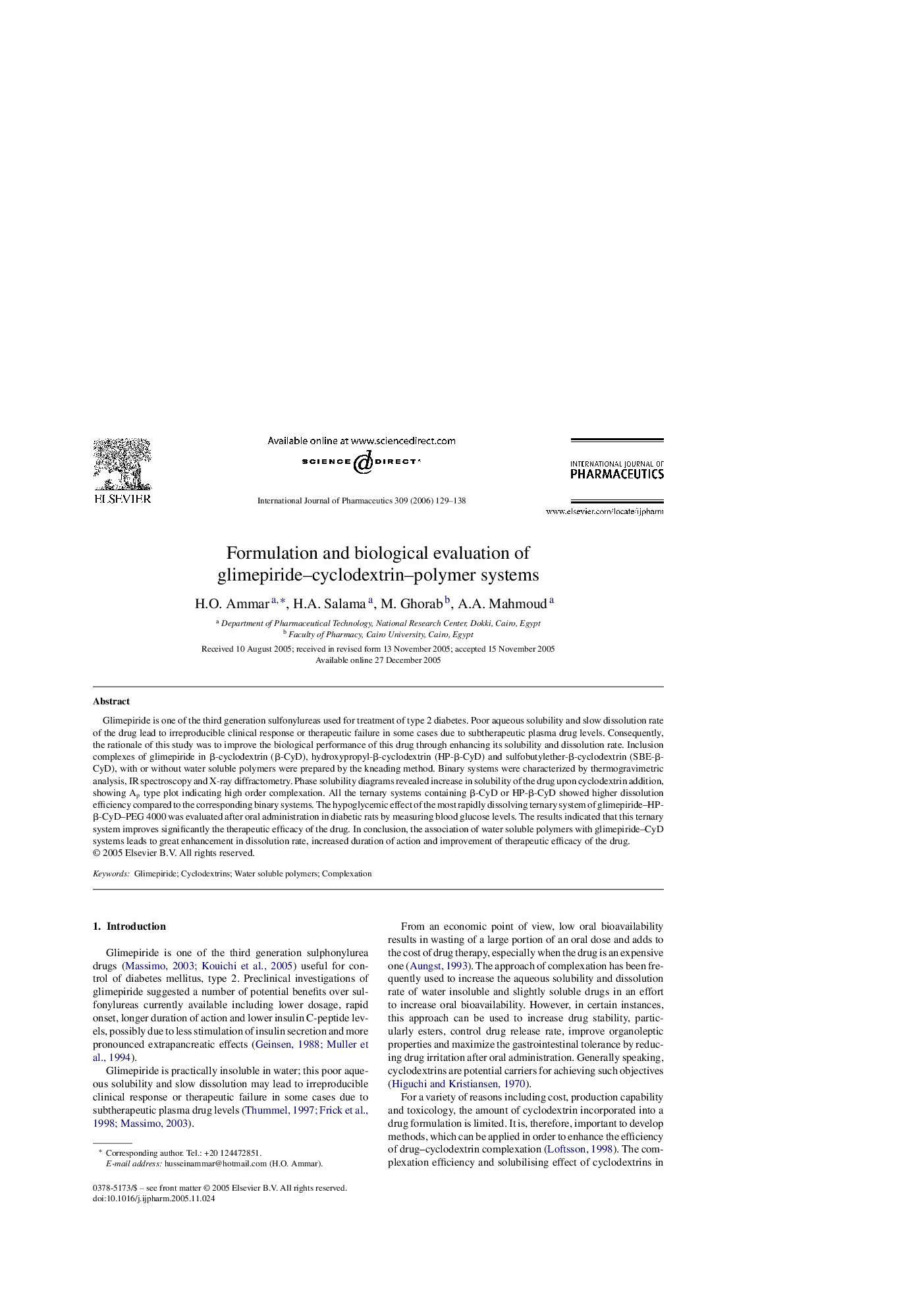| Article ID | Journal | Published Year | Pages | File Type |
|---|---|---|---|---|
| 2507134 | International Journal of Pharmaceutics | 2006 | 10 Pages |
Glimepiride is one of the third generation sulfonylureas used for treatment of type 2 diabetes. Poor aqueous solubility and slow dissolution rate of the drug lead to irreproducible clinical response or therapeutic failure in some cases due to subtherapeutic plasma drug levels. Consequently, the rationale of this study was to improve the biological performance of this drug through enhancing its solubility and dissolution rate. Inclusion complexes of glimepiride in β-cyclodextrin (β-CyD), hydroxypropyl-β-cyclodextrin (HP-β-CyD) and sulfobutylether-β-cyclodextrin (SBE-β-CyD), with or without water soluble polymers were prepared by the kneading method. Binary systems were characterized by thermogravimetric analysis, IR spectroscopy and X-ray diffractometry. Phase solubility diagrams revealed increase in solubility of the drug upon cyclodextrin addition, showing Ap type plot indicating high order complexation. All the ternary systems containing β-CyD or HP-β-CyD showed higher dissolution efficiency compared to the corresponding binary systems. The hypoglycemic effect of the most rapidly dissolving ternary system of glimepiride–HP-β-CyD–PEG 4000 was evaluated after oral administration in diabetic rats by measuring blood glucose levels. The results indicated that this ternary system improves significantly the therapeutic efficacy of the drug. In conclusion, the association of water soluble polymers with glimepiride–CyD systems leads to great enhancement in dissolution rate, increased duration of action and improvement of therapeutic efficacy of the drug.
